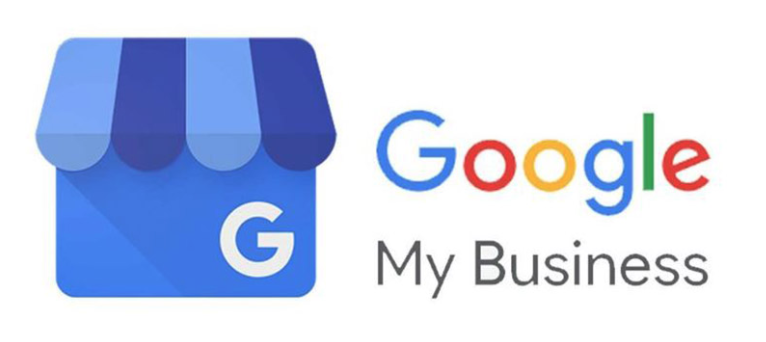
Do you feel a little out of your depth when the topic of Search Engine Optimisation (SEO) comes up? If so, then you’re not alone. Every year, thousands of small businesses find themselves having to grapple with it.
It doesn’t have to be complicated, though. In this helpful and informative guide – SEO for Beginners, you’ll learn about SEO and how search engines work from the ground up. We build concepts simply and intuitively. And any jargon we do introduce, we explain. By the end of it, you’ll have a working knowledge of what search engine optimisation is and how you can use it to gain competitive advantage.
What is SEO?
Search engine optimisation is a set of tools your business can use to improve the quantity and quality of traffic you receive from search engines. Despite the term “search engine”, SEO is often more about people than optimising for algorithms. Most of the work you do will ultimately centre on pleasing your audience and building pages that they love. The technical stuff is part of the journey, but it’s not usually central. What matters most is being informative, engaging, exciting and relevant.
The tools of SEO are the methods you use to improve the quantity and quality of the traffic arriving at your site. So, for instance, if you wanted to increase the number of people coming to your pages, you might target popular keywords for your industry. A business selling tyres in Hobart, for instance, might create articles or videos with titles like “How to change your car tyres in Hobart” or “What to do if your tyre goes flat while driving in Hobart.”
The goal of all this is to get your site to rank higher in search results on Google, Bing, Yahoo, and other search engines. The more relevant, informative and useful your content, the higher your position. Producing a genuinely helpful article on what to do if you get a flat tyre can win your tyre shop more traffic over time.
The quantity of traffic coming to your site via search engines, however, is only part of the story. As a business owner, you care about quality to. You want to make sure that the visitors arriving want to buy what you have to offer.
If your tyre company only fits tyres to cars, it doesn’t make sense to target truck drivers. Likewise, if you only have shops in Hobart, there’s no point targeting drivers with flat tyres in Launceston.
SEO, therefore, requires you to be relevant.
When you get SEO right, you can attract more organic traffic – visitors you don’t pay to acquire directly – and reduce your reliance on paid advertising. If done correctly, SEO can generate up to a 14.6 percent conversion rate.
How Search Engines Work
Search engines’ goal is to show users the most relevant pages related to their searches. Some providers like Google and Bing will literally show the answers to user questions in call-out boxes within the search engine results pages (SERPs) themselves. You’ve probably seen this yourself while perusing the web.
What’s more, search engines are very good at telling whether a page is useful for users or not. They take into account the words in your content and headings, how long a user spends on your pages and links from other sites. If the indicators are good, the search engine will rank your pages higher for that particular search term or “keyword.”
Modern search engines take into account hundreds of different factors when deciding where to rank your page – even seemingly minor things, such as whether you have pop-ups. But, fortunately, you don’t usually need to get bogged down in these. SEO is now more human-centric than in the past because of advances in how search engines rank pages.
The bottom line is this: if you’re creating compelling content that meets your visitors’ needs, Google and the others will reward you. Remember, they want you to delight their users. If you can, that’s all the reason they need to rank you higher. Yes – the technical stuff is still important (and we’ll get to that later), but it is not the be-all-and-end-all.
Search Engine Crawling And Indexing
Search engines work by “crawling” and “indexing pages.” Crawling and indexing just means that a computer programme follows links on the world wide web and then creates a directory of how they link together. A search engine index, therefore, is just a data structure showing all discovered URLs – website addresses – plus relevant keywords that they contain.
Search engines want to know as much as they can about your pages so that they can present high-quality search results to their users and fulfil their needs as quickly as possible. Crawling programmes, therefore, will look for the following general indicators:
- The freshness of a page, indicating how recently you updated it
- The user engagement of the page, including how people interact with it, how long they spend on it, and how other domains link to it
- The type of content on the page, whether it is strictly commercial, informative, or entertaining, and how it appears on browsers
- The keywords which indicate the topics that the page covers
When users search, search engines take into account all of these factors in their index. They want to serve up fresh content that will engage the user and reflect their original search intentions. Algorithms don’t have any intuition, so they don’t always get it right. But these days, they’re pretty good.
Keyword Research

To rank highly in SERPs, you’ll need to discover phrases that your target audience uses when searching for products and services like yours and then deploy them on your pages. Finding them, though, requires following the right method.
What Is Keyword Research?
Keyword research is the process of discovering particular search phrases your audience uses when they want to buy the things you sell.
So, for instance, if you sell tyres in Brisbane, your task is to discover all the phrases your audience types into search engines when they want to buy your products. Here are some of the keywords they might type:
- Tyres in Hobart
- New tyres near me
- Help with a flat tyre in Hobart
- Local tyre repair shop
Note that all of these keywords have an intent associated with them. Users who type these phrases into the search bar aren’t just looking for information. They want services right now – precisely the people most likely to convert.
How To Do Keyword Research
SEO keyword research is both about finding the words that your users are typing into search and those they’re not. Creating a list of phrases to include in your pages and blacklisting those that are irrelevant is crucial because it makes sure that you only get the traffic you want. You could target generic keywords, but what would be the point of wasting time on that if it didn’t lead to sales?
Here’s how to do keyword research:
Step 1: Make A List Of Topics To Do With Your Business Your Audience Finds Important
Ideally, you want your pages to serve the needs of prospective customers in some way. And that means thinking carefully about what they’re likely to type into search.
You could do this randomly or piecemeal, but it is easier to break it down into topics. Try to come up with half a dozen buckets into which you can throw all your keyword ideas.
Let’s say you run a dental clinic. Your buckets could be:
- General dentistry
- Children’s dentistry
- Teeth whitening
- Dentures and implants
- Cosmetic dentistry
Remember, 50 percent of keyword queries are “long-tail,” consisting of four words or more.
Step 2: Fill Your Topic Buckets
Once you’ve got your topics buckets, you can then fill them with keywords – phrases users type into search engines to find your services.
Returning to the dentist example, keywords might include:
- Extractions near me
- White fillings that look like teeth
- Dentures that won’t fall out
- Anaesthetics for root canal
Notice how each of these keywords reflects the topics above and reveals a specific user concern. There’s intent baked into each of these searchers. The patient looking for an anesthetic for root canal treatment is worried that it will hurt. The patient who wants white fillings is probably concerned about having regular, dark amalgam in their mouths.
Step 3: Search For Related Terms
Once you’ve set the groundwork, you can then use keyword research tools to search for related terms. These pieces of software won’t tell you where to start your search. But once you give them a pillar keyword, they’ll provide you with all of the associated keywords, plus the number of times people search for them in a given month. Useful products include Google Keyword Planner, Ahrefs, SEMrush, Moz and Keywordtool.io.
The number of searches is essential. Sometimes you’ll find what looks like a great keyword, but it might only have one or two searches per month. In a situation like this, you need to ask yourself whether it is worth targeting those users. If you think the conversion rate will be high – say 50 per cent – then go for it. If not, then it might not be worth your time.
Competitor Analysis

The easiest way to begin your SEO journey is to look at what your competitors are doing and copy them. Remember, at the start of your SEO journey, your goal isn’t to dominate the rankings and “create a moat.” You don’t need to reinvent the wheel. All you need to do is get your campaign off the ground. Following your rivals can do that with minimal effort and impactful results. Remember, most companies in your industry will already have done heaps of keyword research and link-building. They know what works.
Competitor SEO analysis allows you to do the following:
- Discover which SEO tasks your rivals prioritise
- Find out where your competitors are getting backlinks on the web (hyperlinks from third-party sites)
- Discover your rivals’ strengths and weaknesses
- Learn what SEO techniques work in your industry
- Get insights on how you can outperform your competitors
Doing competitor analysis is way easier than you think.
Step 1: List Your Competitors
First, come up with a list of your competitors. Think about all the firms you compete with both directly and indirectly. Try to focus on companies that sell similar products. Don’t focus so much on competitors offering substitutes. (If you operate a jet ski hire service, don’t include other leisure companies, like surfing coaches, in your list).
If you’re not sure who your competitors are online, you can use Google to find out. Just type in a phrase that reflects your business the best – such as “jet ski hire company” and see who shows up in SERPs.
Step 2: Analyse Your Competitors
The next step is to use a keyword research tool like Ahrefs or SE Ranking to gather some high-level metrics on how your competitors are performing, giving you a sense of their competitiveness.
Most tools provide you with the following information:
- Referring domains – the number of external sites that link to your competitor’s web pages. The more they have, the stronger their position.
- Organic traffic – the number of unique visitors your competitors’ website pages are getting every month. Again, the more they get, the stronger their position.
- Backlink profile – a measure of the quality of a site’s backlinks. Use this to find out whether your competitors are spamming links or nurturing relationships with reputable sites.
Once you have this information, you can do all sorts of smart things. For instance, you can look at backlink growth over time and look for patterns. A hockey-stick-shaped graph might indicate a piece of content that performs well – something you might want to emulate.
Step 3: Find People Willing To Link To You
Competitor analysis tools allow you to see who is linking to your competitors. In many cases, they will be willing to link to you too. Also consider current relationships – is there a way to leverage these? For instance, a tourism operator might consider hotels, governing bodies, tourism boards, blogs etc. Consider backlinks like votes for your business.
More on backlinks later in the article.
Step 4: Study Competitor’s Organic Keywords
Competitor analysis tools also let you see which keywords your rivals rank for. This is helpful when doing keyword research because it lets you look for opportunities to target low-competition, high-popularity search phrases.
You can also see how your competitors target “rich snippets” – Google’s name for boxes that appear in SERPs answering user queries. Ideally, you want to take what they do and improve on it.
Step 5: Find Content Gaps
Finally, you can look for content gaps to discover niches your competitors are not yet targeting. Getting the jump on them here can dramatically improve your SEO. Again, we’ll cover this off in more detail later in the article.
Types Of SEO
Marketing gurus like to break down SEO into different categories to make it more manageable.
On-site SEO
On-site SEO encompasses optimising elements on your website to improve your SERPs ranking and get more traffic.
You can further break it down into keyword and non-keyword on-site SEO.
Examples of on-site keyword SEO include:
- Placing relevant keywords in your header tags, meta descriptions, page descriptions, page content and titles
- Providing detailed, useful and relevant content to your target audience
- Offering unique, authoritative and trustworthy content
- Aligning content with the user intent
Examples of non-keyword related on-site SEO include:
- Including page metadata
- Optimising your site for mobile
- Altering your URL structure so that it makes sense syntactically
- Improving page loading speeds
- Ensuring that your page elements load naturally
Technical SEO
The definition is technical SEO is a little more slippery. In general, it is anything that makes your site more visible for crawling and indexing – two topics we discussed earlier. Some elements of technical SEO are a part of on-site SEO because they directly relate to your website, and some are off-site because they involve third parties.
Technical SEO includes:
- Building sitemaps – data-rich parts of your website backend that shows search engines your page structure
- Including meta tags – descriptions search engines use to determine the content of your pages
- Finding dead links – pages that you link to that no longer exist
- Eliminating the risk of duplicate content – telling Google that individual pages are meant to appear twice (for instance, if you migrate from HTTP to HTTPS). This is also referred to as a canonical tag.
- Ensuring website security – having an SSL certificate is good for SEO because it tells Google that users will be safe if they go to your site.
- Ensuring page speed – doing a page speed test can tell you if your pages load fast enough to delight users and please Google. You can test your page speed using tools such as Pingdom and Google’s Page Speed Insights
Off-site SEO – Link Building
Off-site SEO involves anything you do to improve your search ranking that involves third-party sites. Typically, off-page SEO involves link building – the art of getting authoritative third-party sites to hyperlink to yours. The more of these you can acquire, the more valuable search engines will consider your pages (the reasoning being, if lots of pages link to them, then they must be useful).
When building “backlinks” from third-party sites, you need to consider the actual text that you want to link to yours – often called the “anchor text.” Google and other search engines use this information to detect spam and gather more information on the content of your pages. =
A good backlink strategy involves making connections with relevant sites in a way that helps users. So, going back to the tyre example, you might place a backlink on a car blog in an article about replacing tyres. The link anchor could be “replacement tyres” and be available to forward users to your site.
Notice that this placement is useful because the people reading the article probably need help changing their car tyres anyway. It’s not spam.
Sometimes you’ll read about “inbound links.” This term just refers to links coming from other sites to yours.
You can also use a backlink checker to detect spammy links search engines punish you for having. The software monitors all inbound links to your site, alerting you of any low-quality links that might hurt your ranking. Remember, search engines don’t like spam, so keeping tabs on all links to your site is vital.
Google My Business

Google My Business is a vital part of small business SEO. It allows you to tell Google that you are a commercial company and that it should treat you as such.
Setting up Google My Business is easy. You simply go to the Google Business page, fill out your details, and follow the step-by-step instructions. Once you do that, Google will include your business information (such as opening times, telephone number, website and email) in relevant search results, allowing users to find you more easily.
You can also use the tool to become a Google Maps business if you have a physical location where customers can buy your products and services. Just provide proof of address to Google, and it’ll add your pin to Maps so that when customers click on it, they can find out about your business.
Online Reviews

Online reviews are an essential part of your off-site SEO strategy. Google and other search engines love them because they tell them whether a company offers a great experience or not.
There are many third-party review sites you need to consider. Google has its own, called Google Reviews. Directories like Yelp also offer them. And so too do third-party platforms, such as TrustPilot, which operate independently of search engines.
Google has publicly stated that reviews matter to its ranking algorithm. But even if they didn’t, they’d still arguably be important to SEO. Remember, search engine optimisation is all about encouraging a higher quantity and quality of traffic to your site. If people read a great review of your brand from their peers, they’re much more likely to visit.
Local SEO

For most small businesses, local SEO is more important than general SEO. More than 82 percent of smartphone users conduct “near me” searches. Thus, the idea of local SEO is to improve the visibility of your pages to people searching for you in a given geographic area.
You can see how local SEO would be relevant in our Hobart tyre example. Nobody working in Sydney would take their car to Hobart for a tyre change, but people living in the city itself might.
Some agencies help small businesses get found by people in their area. Local SEO services help to pack their pages with content that mentions the location, telling Google the area the business page is targeting.
Local search optimisation, however, isn’t as simple as telling Google My Business where you are. You need to distinguish between audiences physically in your region and those looking for services in your area because they’re planning on making the trip.
Somebody living in Hobart, for instance, probably wouldn’t look for hotels in the city if they already have a house there. A tourist, however, might, even if they’re the other side of the world.
Thus, Google local SEO involves physically locating your business and creating plenty of content around the location. A local SEO company will usually do both on your behalf.
Content Marketing
Content marketing is all about creating content that your users will love. The idea is to draw in users by providing them with something informative, educational, helpful or entertaining. It could be directly about your products and services, but not necessarily. In fact, the best content usually addresses an issue your audience faces and then points them towards your services. There’s no direct selling or promotion.
How To Build A Content Marketing Strategy – Step 1: Set Out What You Want To Achieve
The core question in any content marketing strategy is “why?” What exactly are you trying to achieve when you create content?
If you’re creating content for SEO, the answer is obvious: you want to build a content library that attracts people interested in your products and services. In this case, you’ll want to focus on SEO content writing – a form that deliberately seeks to include target keywords in the titles and content itself.
Step 2: Come Up With A Content Plan
Most firms – including small businesses – have a content marketing plan. This document forms the basis of their content strategy, providing the technical details for what precisely they are going to do.
You can either apply it in-house or get a content marketing agency to do it for you. Essentially, this step involves thinking about the type of content you’re going to produce (be it blogs, articles, white papers, e-books, videos, or infographics) and which topics you are going to cover.
Notably, the content plan should directly reflect the marketing strategy. Thus, you should always create the strategy first and then iron out the details afterwards.
A great tool to consider is Answer The Public. By typing 1-2 keywords into the search box, it will allow you to get instant, raw search insights into the minds of your customers.

Step 3: Create Pillar Pages
A pillar page is just a page that links to all other content-containing pages on your site. You see these pages on standalone blogs all the time (and good business sites). They are usually a particular category related to your business (often related to your keyword buckets). So, for instance, a dentist might organise content under pillar pages such as “cosmetic dentistry,” “gum disease,” “dental technology” and so on. Creating these hierarchies makes it easier for users to navigate pages and find relevant information.
Step 4: Create Internal Links
Internal links are essential for SEO because they give Google more information about your website’s structure. Having blog posts in the same category link to each other tells Google that they cover similar topics.
Internal linking also tells search engines which of your pages are the most important. If your blogs all link to your services, then this says that they are more valuable and should, if push comes to shove, appear in SERPs.
Of course, the creative direction your content takes is entirely up to you. You should discuss this aspect at the strategy stage. You need something that makes sense both for your audience and SEO purposes.
Measuring ROI

They say if you can measure something, you can improve it. In business, nothing matters more than getting a positive return on your investments. If you’re not making money via your SEO efforts, you need to change tack.
Measuring how much money you’re making on your SEO efforts, however, isn’t always straightforward. How much business a particular piece of content generates is a murky question, indeed.
In basic terms, your SEO return on investment (ROI) is:
SEO ROI = (SEO Revenue – SEO Cost) / SEO Cost
SEO cost is easy to calculate: that’s how much you’re spending on SEO services, content writing and outreach.
SEO revenue, however, is much harder to measure. You somehow have to track the effects of your search engine optimisation campaigns and then calculate an actual figure.
Fortunately, you can get some leverage on this question by tracking individual conversions.
Let’s say, for instance, that a piece of content cost you $100 to produce. That’s the “SEO cost.” Now suppose that after consuming it, you get ten new customers, each generating $50 for your company.
Your SEO ROI in this case is (10 x $50- $100)/$100 = 5. In other words, the content provided a 500 per cent return.
Of course, you need to be very careful when tracking conversions. You might believe, for instance, that it was the content that generated the sale. But it could have been another interaction somebody had with your business elsewhere. Perhaps they called you up and were impressed with your phone manner, and that’s what encouraged them to consume your content. Or maybe you already spent money capturing their attention through paid search and them reading your content is just a byproduct.
Setting Up Conversion Tracking
Given this discussion, you can appreciate the importance of conversion tracking. Fortunately, there are many helpful tools out there to help you do it. Google Analytics, for instance, allows you to track individual users reaching your site, allowing you to see precisely which aspects of your SEO strategy are yielding revenue.
Google Tag Manager is another great tool that can help track button clicks on items such as form submissions and mobile click to calls.
If you run an eCommerce store, you can directly track SEO revenue creation. If you have a service-based business, you can set up a dollar-cost for the average service package you sell.
Sorting Conversion Channels
Google Analytics and similar tools also allow you to sort your conversion channels so you can see where your traffic is coming from, allowing you to single out SEO. A breakdown might include:
- Direct
- Paid search
- Organic Search
- Display
- Referral
- Social network
- Other advertising
Organic search includes all the users who found you by looking for your website through search engines, like Google and Bing. Once you have this figure, you can dig deeper into your actual SEO revenue.
Conclusion
Hopefully you have now gained an understanding of the basics of SEO. You should also now understand that an online presence is crucial for everyday businesses and an SEO strategy can help make you stand out above your competitors.
To be successful at SEO, your website needs to be search engine friendly, offer valuable content to your visitors, and have authority and trust. SEO is not only a recommendation for the modern business, it has now become a necessity.
Always remember that the ultimate aim with any SEO campaign is to gain more exposure and traffic for your business or your websites content. Aim to create meaningful relationships with your audience through the use of value based content. If every action you take has your customer in mind, you’re on the right path.
To speak to one of our team in more detail schedule your FREE 30 min online marketing audit here







Leave A Comment
You must be logged in to post a comment.